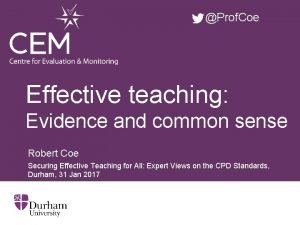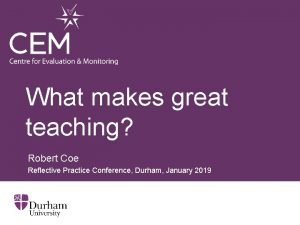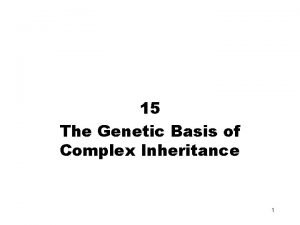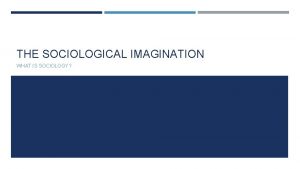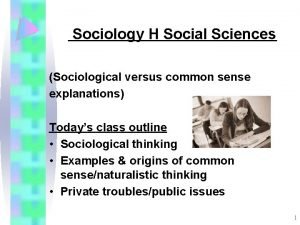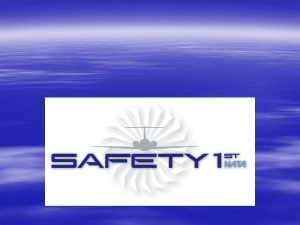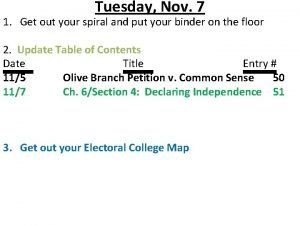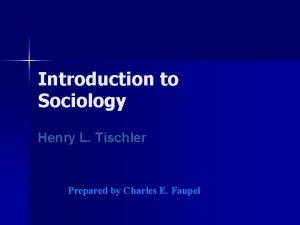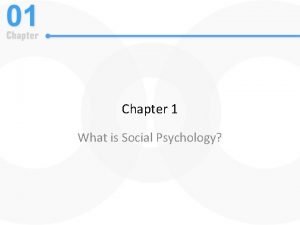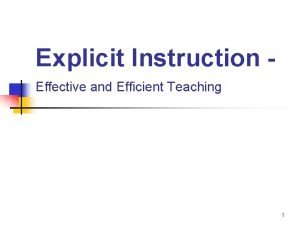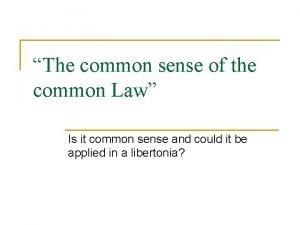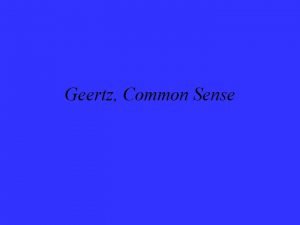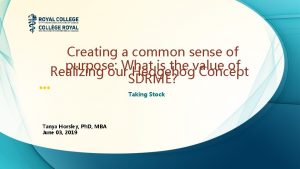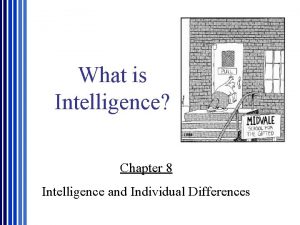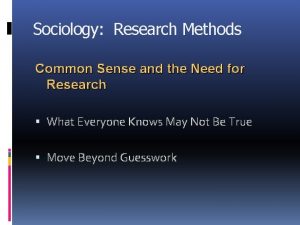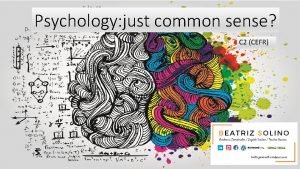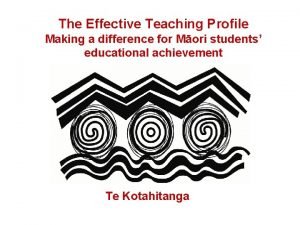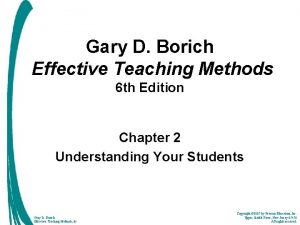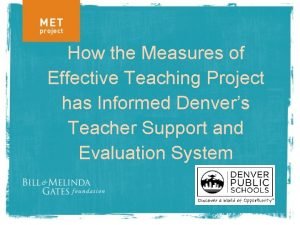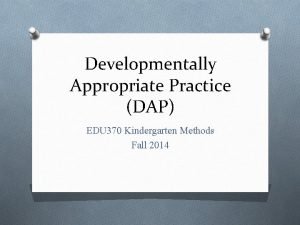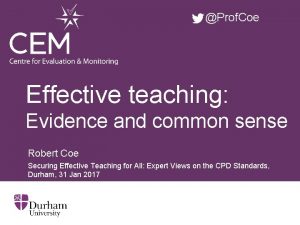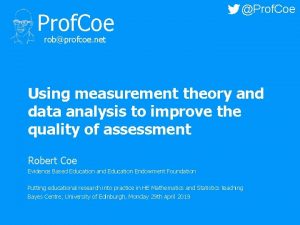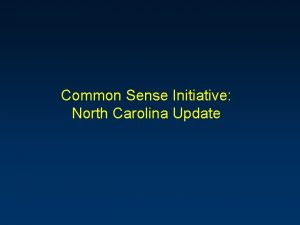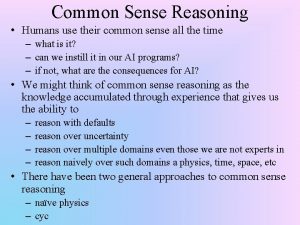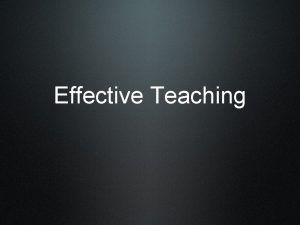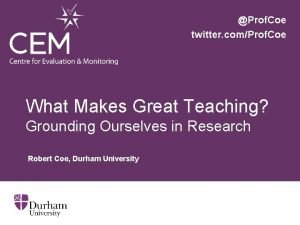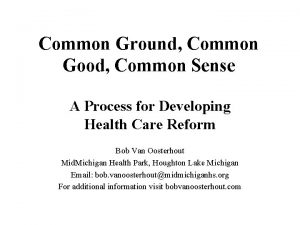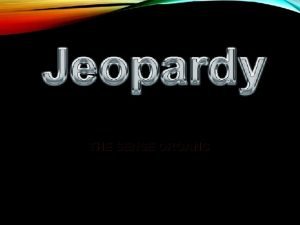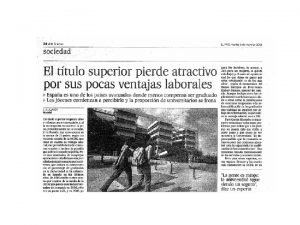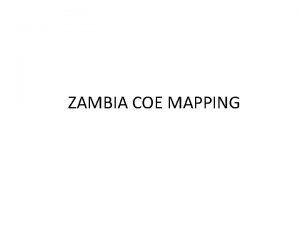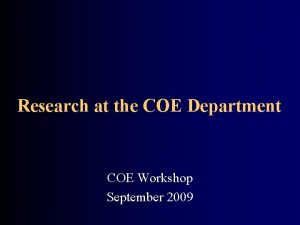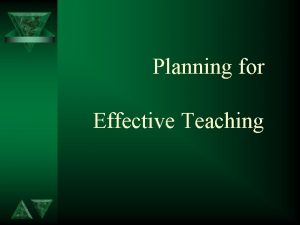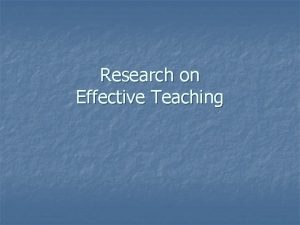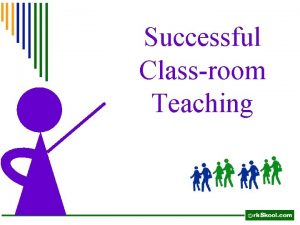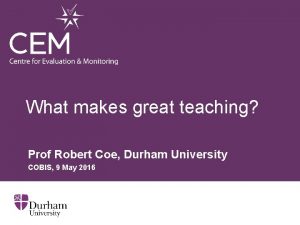Prof Coe Effective teaching Evidence and common sense





































- Slides: 37

@Prof. Coe Effective teaching: Evidence and common sense Robert Coe Securing Effective Teaching for All: Expert Views on the CPD Standards, Durham, 31 Jan 2017

Q: What are the options for: – Something that makes an important difference to learning – Something we can change – Something cost-effective ∂ value to teachers as – Something that gives professionals A: Professional learning 2

Outline 1. What can research tell us about ‘great teaching’? 2. How do we get more of it? ∂ 3. How can we tell if anything has improved? 3

1. Research-based practices: Pedagogy

True or false? 1. Reducing class size is one of the most effective ways to increase learning [evidence] 2. Differentiation and ‘personalised learning’ resources maximise learning [evidence] 3. Praise encourages learners and helps them ∂ persist with hard tasks [evidence] 4. Technology supports learning by engaging and motivating learners [evidence] 5. The best way to raise attainment is to enhance motivation and interest [evidence] 5

Sources of evidence http: //cem. org/blog/what-is-worth-reading-for-teachers-interested-in-research Online & freely available – – – ∂ Effective pedagogy (6) Impact of interventions (3) How learning happens (8) Teachers’ PD (2) School improvement and leadership (3) Books (8) Blogs (10) 6


Dimensions of great teaching 1. (Pedagogical) content knowledge 2. Quality of instruction 3. Classroom management / behaviour / control ∂ 4. Classroom climate / relationships / expectations 5. Beliefs (theory) about subject, learning & teaching 6. Wider professional elements: collegiality, PD, stakeholder relationships 8

1. We do that already (don’t we? ) § § § § § Reviewing previous learning Setting high expectations Using higher-order questions Giving feedback to learners ∂ Having deep subject knowledge Understanding student misconceptions Managing time and resources Building relationships of trust and challenge Dealing with disruption 9

2. Do we always do that? § § § § Challenging students to identify the reason why an activity is taking place in the lesson Asking a large number of questions and checking the responses of all students Raising different types of questions (i. e. , process and product) at appropriate ∂ difficulty level Giving time for students to respond to questions Spacing-out study or practice on a given topic, with gaps in between forgetting Making students take tests or generate answers, even before they have been taught the material Engaging students in weekly and monthly review 10

3. We don’t do that (hopefully) § § § § Use praise lavishly Allow learners to discover key ideas for themselves Group learners by ability Encourage re-reading and highlighting to memorise ∂ key ideas Address issues of confidence and low aspirations before you try to teach content Present information to learners in their preferred learning style Ensure learners are always active, rather than listening passively, if you want them to remember 11

Evidence about the impact of interventions EEF Teaching and Learning Toolkit www. educationendowmentfoundation. org. uk/toolkit ∂ 12

Effect Size (months gain) Impact vs cost www. educationendowmentfoundation. org. uk/toolkit Most promising for raising attainment 8 May be worth it Feedback Meta-cognitive Mastery Homework (Secondary) Collaborative Peer tutoring Reading comprn Early Years 1 -1 tuition ∂ Behaviour Small gp Phonics Parental tuition involvement ICT Social Individualised Summer schools learning Mentoring Teaching Homework assistants (Primary) Performance Aspirations 0 Ability grouping pay £ 0 Cost per pupil Smaller classes After school Small effects / high cost £ 1000 Repeating a year

2. Promoting and developing great practice

www. gov. uk/government/publications/standard-for-teachers-professional-development ∂ 15

Cordingley et al 2015 http: //tdtrust. org/about/dgt/ ∂ 16

What do we know about teachers’ professional learning? Three types of requirement 1. General principles of how people learn ∂ anything 2. Specific requirements for learning to change pedagogical practice 3. The learning environment: school culture and leadership 17

All good learning & teaching … § § § Takes you from where you are at Is clear what success looks like Creates challenging expectations Assesses and feeds back on the gap ∂ Requires exposition and guidance from an expert § Requires a coaching & mentoring role § Benefits from peer support § Requires trust: ‘OK to fail’ 18

Principles for learning to change pedagogical practice § Learning aims (for teachers) must be strongly linked to learning gains (for pupils) § Learning aims must be evidence based § Learning aims must be ∂ appropriate to school/pupil context § Changing habits that are already established is very hard (needs time, support, feedback) § Pedagogy is a blend of theory (wisdom and intuition) and practice (skills and techniques) 19

Leadership, school culture and professional learning § The value of professional learning and continuous improvement must be clearly signalled (championed and modelled) § Time and funding must be made available ∂ § A trust culture (‘willingness to be vulnerable’ = please observe my worst lesson) is vital § Challenge implies need for improvement § Requires coherence with a wider strategic planning process for prioritisation and integration 20

Advice for engaging with external providers § Understand the research evidence about effective teaching: buy from a position of knowledge § Try not to be influenced by marketing, testimonials, popularity∂ § Weigh the trade-offs between – Short- vs long-term – Surface vs deep change § Ask for evidence of impact (& evaluate it) – Existing – Built-in to the programme you buy 21

3. Has anything improved?

The #1 fact about ‘what works’: It doesn’t always work ∂ 23

Even if you follow the evidence, it may not work, so § Monitor – Routine, on-going, real-time collection of data – Analysis and evaluation to see what seems to be working ∂ – Feedback into processes § Evaluate – For interventions, changes, investments – Is the impact worth the cost? 24


Assessing the quality of teaching Three approaches to assessing teachers that demonstrate moderate validity in signalling effectiveness: 1. classroom observations by peers, principals or external evaluators 2. ‘value-added’ models (assessing gains in student ∂ achievement) 3. student ratings of teaching Three other approaches had limited evidence: 4. principal (or headteacher) judgement 5. teacher self-reports 6. analysis of classroom artefacts and teacher portfolios 26

How do you know if teaching is working? 1. High-quality assessment – Not levels (generalised descriptors/criteria) – Convergent with learning goals & other evidence – Check for bias & confounds 2. Lesson observation ∂ – Be very cautious! (no grades or consequences) – Based on ‘Great Teaching’ evidence – Trust teachers with consistently good outcomes 3. Student feedback – Use validated instruments 27

Using good assessment to monitor teaching § Standardised – criteria, exemplars, context, moderation, objective § Reliable ∂ – accurate, consistent across teachers § Aligned – Captures valued learning 28

Do we know a good lesson when we see one? ∂ 29

Key elements of good evaluation Y I D EEF n o i t a Evalu e d i u G § Clear, well defined, replicable intervention ∂ § Good assessment of appropriate outcomes § Well-matched comparison group

Good evaluation 1: Be clear what you are evaluating § Programme must be – Well-defined: clear & explicit what it is/isn’t – Manipulable: something you can choose to ∂ implement (or not) – Replicable: the same other times / places

Good evaluation 2: Be clear what counts as success § What are the aims of the programme? – What outcomes does it seek to improve? § How can they be measured (or otherwise ∂ captured)? – What indicators, observations or assessments can be used?

Good evaluation 3: What would have happened otherwise? § Is it possible to create a ‘control’ group? – Alternative programme? Waiting list? § Are there other comparators? ∂ – Performance in other subjects? Cut-off designs? § Is there a baseline? – Test/measure before the programme? Use past years data? § Can you generate (and rule out) alternative explanations?

Guskey (2000): Five levels of evaluation 1. 2. 3. 4. 5. Participant reaction Participant learning Organisational support and change ∂ Participant use of new knowledge and skills Pupil learning outcomes

Professional Development: Stages of evaluation 1. A clear logic model 2. Judgements of programme alignment with a) b) Evidence-based practice Organisational journey 3. Assessment of teacher learning / thinking / ∂ attitudes / culture 4. Evidence of change in teachers’ practice 5. Evidence that these changes are sustained 6. Plausible evidence of changes in student outcomes 7. Strong evidence of changes in student outcomes attributable to the PD Is the programme appropriate? Has it led to change? Has it improved student outcomes?

Summary …

Take-home messages § The effectiveness of teaching depends on teachers’ knowledge, skills, judgement, intuition, etc. § Every teacher can improve these things, though it takes time and effort ∂ § An understanding of what is effective should be informed by research evidence – it is not obvious or universally practised § There are no recipes or universal solutions § Monitoring and evaluation are vital (but also hard) 37
 Effective teaching evidence and practice
Effective teaching evidence and practice What makes great teaching
What makes great teaching Narrow sense heritability vs broad sense heritability
Narrow sense heritability vs broad sense heritability Narrow sense heritability vs broad sense heritability
Narrow sense heritability vs broad sense heritability Sociology and common sense
Sociology and common sense Common sense and sociological explanations
Common sense and sociological explanations Right attitude and common sense
Right attitude and common sense Venn diagram of olive branch petition and common sense
Venn diagram of olive branch petition and common sense Venn diagram of olive branch petition and common sense
Venn diagram of olive branch petition and common sense Sociology and common sense
Sociology and common sense Venn diagram of olive branch petition and common sense
Venn diagram of olive branch petition and common sense Four factors of fair use
Four factors of fair use Social psychology and common sense
Social psychology and common sense Examples of explicit instruction
Examples of explicit instruction Individual evidence can have probative value
Individual evidence can have probative value Common sense law definition
Common sense law definition Common sense as a cultural system
Common sense as a cultural system Common sense is published
Common sense is published Common sense of purpose in the workplace
Common sense of purpose in the workplace Common sense vs intelligence
Common sense vs intelligence Brajuha research
Brajuha research Psychology just common sense
Psychology just common sense Common sense vs intelligence
Common sense vs intelligence In common sense, thomas paine argued that
In common sense, thomas paine argued that Common sense phrases
Common sense phrases Phases in micro teaching
Phases in micro teaching Te kotahitanga effective teaching profile
Te kotahitanga effective teaching profile Gary borich
Gary borich 10 principles of effective online teaching
10 principles of effective online teaching Measures of effective teaching project
Measures of effective teaching project 10 effective dap teaching strategies
10 effective dap teaching strategies Primary evidence vs secondary evidence
Primary evidence vs secondary evidence Primary evidence vs secondary evidence
Primary evidence vs secondary evidence Secondary sources
Secondary sources Primary evidence vs secondary evidence
Primary evidence vs secondary evidence Primary evidence vs secondary evidence
Primary evidence vs secondary evidence Fiber evidence can have probative value as class evidence.
Fiber evidence can have probative value as class evidence. Class vs individual evidence
Class vs individual evidence
